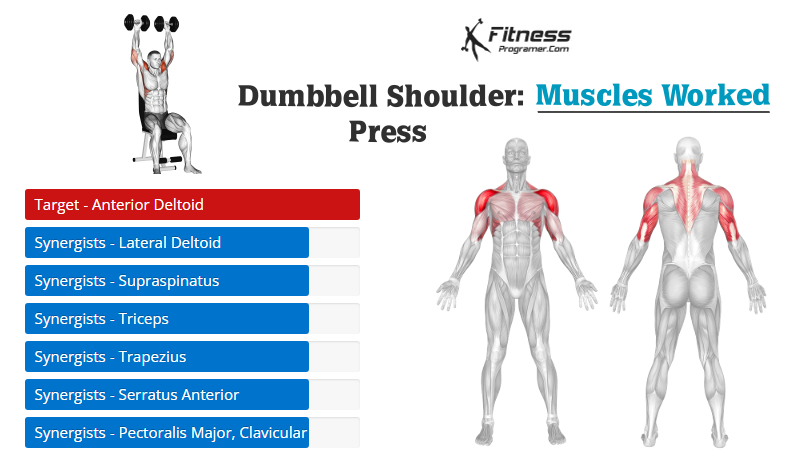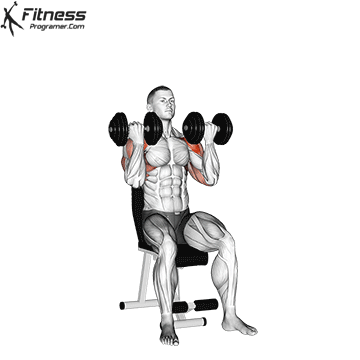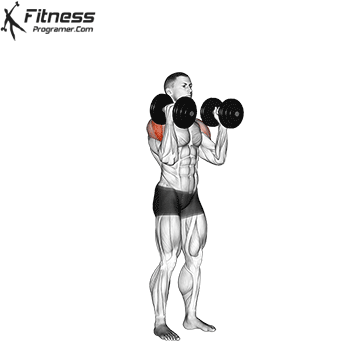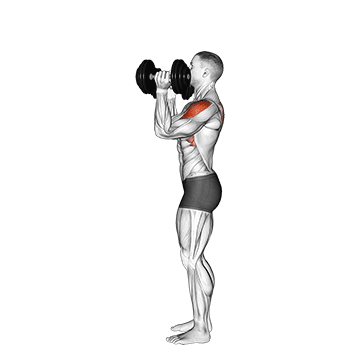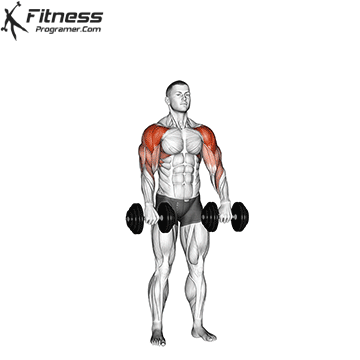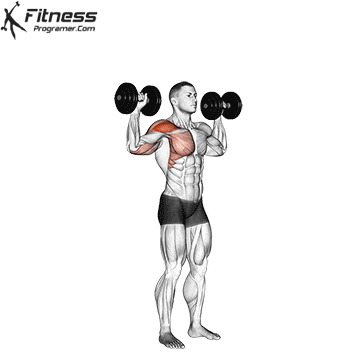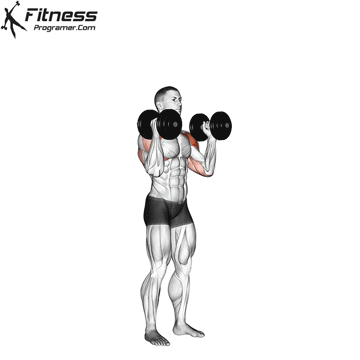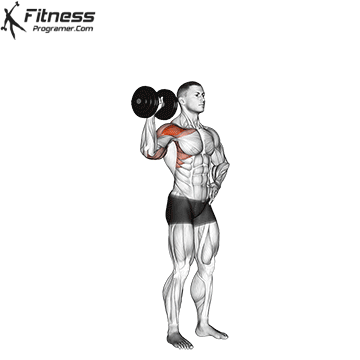Overview
How to Perform the Dumbbell Shoulder Press
- Starting Position: Sit on a bench with back support or stand with your feet hip-width apart. Hold a dumbbell in each hand at shoulder height with palms facing forward or slightly inward.
- Brace and align: Engage your core, keep your spine neutral, and retract your shoulder blades lightly.
- Press overhead: Press the dumbbells upward and slightly inward until your arms are fully extended without locking out at the elbows.
- Lower under control: Slowly lower the dumbbells back to shoulder height while maintaining control and tension.
Tips for Proper Form
Keep your wrists neutral and aligned with your forearms.
Avoid overarching your lower back—brace your core to maintain spinal integrity.
Press in a slight arc rather than straight overhead for joint comfort.
Common Mistakes
Leaning back excessively and turning the press into an incline chest press.
Using momentum to “bounce” the dumbbells overhead.
Flaring the elbows too far out, stressing the shoulder joints.
Benefits of the Dumbbell Shoulder Press
- Shoulder muscle development: The dumbbell shoulder press primarily targets the deltoid muscles, which are responsible for the roundness and definition of your shoulders. By regularly performing this exercise, you can increase the size, strength, and tone of your shoulder muscles.
- Upper body strength: This exercise engages not only the shoulders but also the trapezius muscles, triceps, and upper chest to a certain extent. As a result, it helps in developing overall upper body strength and power.
- Muscle imbalance correction: Many people tend to have imbalances between their shoulder muscles due to poor posture or overuse of certain muscles. The dumbbell shoulder press can help correct these imbalances by working both sides of the body independently.
- Increased range of motion: Performing the dumbbell shoulder press through a full range of motion can improve the flexibility and mobility of your shoulder joints. This can be beneficial for activities that require overhead movements, such as reaching, throwing, or playing sports like basketball or tennis.
How to Incorporate Into Your Routine
The dumbbell shoulder press is a versatile pressing movement for strength, size, and function. Here’s how to integrate it effectively:
- For Beginners: Start with 2–3 sets of 8–12 reps seated, using light dumbbells to develop form and control.
- For Hypertrophy: Use 3–4 sets of 8–12 reps with moderate to heavy weight. Slow the tempo to maximize time under tension.
- For Strength: Perform 3–5 sets of 5–8 reps standing or seated with heavier dumbbells after warm-up sets.
- For Functional Training: Do it standing with a neutral grip, incorporating core stability, for 3 sets of 8–10 reps.
- For Circuit Training: Include it in an upper-body or push-day circuit for 10–12 reps with short rest periods.
- For General Fitness: Add 2–3 sets of 10–12 reps to shoulder or full-body workouts for overall upper-body strength.
Dumbbell Shoulder Press: Muscles Worked

Dumbbell Shoulder Press Variations
Frequently Asked Questions
Should I do this seated or standing?
Both are effective. Seated versions isolate the shoulders more, while standing adds core and balance demands.
Is it okay to use a neutral grip?
Yes, a neutral grip (palms facing each other) can reduce shoulder joint stress and is often more comfortable.
Can beginners use the dumbbell shoulder press?
Absolutely. It’s a great foundational press. Just start light, focus on form, and avoid pushing to failure.
Why do my traps feel sore after this?
If the traps are over-engaged, it could be due to poor form or elevating the shoulders. Focus on relaxing the upper traps and keeping tension in the delts.
How does this compare to the barbell overhead press?
The dumbbell version allows a greater range of motion, more shoulder freedom, and better unilateral balance—but usually with lighter loads.
